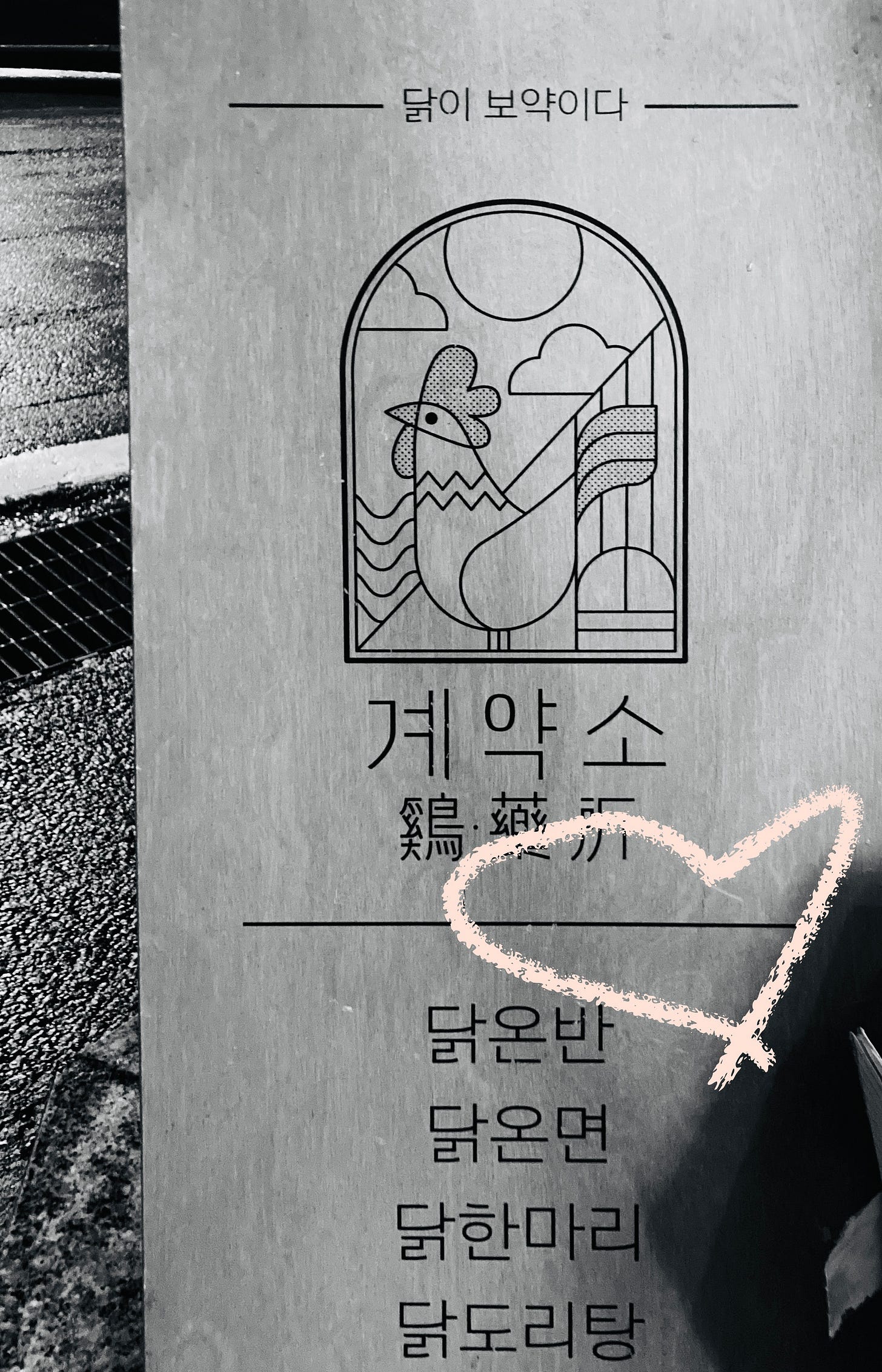Dogmeat, anyone?
Korea by a Korean-American "kyo-po": Part 1. A series of highlights from my family's recent trip to Korea.
My parents immigrated to the States in the late 70’s. They landed in Salinas, California, near Monterey Bay. As my grandfather’s broken English and my broken Korean could theoretically make one whole, the following is what I understand of the family’s immigration story, with the caveat that some of it might just be plain wrong, however unintentional.
My grandfather worked on an American army base in Korea. My dad grew up horsing around with G.I.’s, listening to the Beatles and eating burgers and dogs. (Those three things are still very important to him [and the rest of humanity].) Apparently (and this is where the story might turn fictional), the G.I'.’s cobbled some money together and sponsored my grandfather’s immigration. They also helped him pay for a local 7-11 store, and the rest is history. My grandfather was able to support his family in his new country, and continued buying and selling 7-11’s throughout the 80’s and 90’s and ended up in Milpitas, a town at the southernmost tip of the San Francisco Bay.
My dad worked nights at the store while he went back to school at San Jose State to study chemical engineering. He and my mom both had college degrees from Korea, but they were in English and Music, which were going to make as much money for them in the States as in Korea. I imagine my dad felt grateful for the opportunity my grandfather’s 7-11’s gave him. Having marketable skills will always secure greater economic opportunity for your children.
My sisters and I grew up speaking Korean, and ate mostly Korean food. However once we went to elementary school, we lost our Korean and my mom started cooking what we wanted—Hamburger Helper and Spaghetti-O’s. My maternal grandmother moved in with us when I was six, reorienting our diet to Korean food, but in general, we were definitely a family that had left Korea decidedly in the past—our parents and grandparents never went back to their homeland until much later, and never wanted to, from what I can remember. My parents generally preferred their American anything to their Korean anything (except soccer). And since we grew up pre-dotcom Bay Area, we were still very much an “other” to our mostly white friends, and did not want to exacerbate the situation by going around proclaiming that we were indeed that.
Thus when I had my own children, I knew there was likely no way for me to pass on anything deeply Korean to them except in DNA. Both my husband and I had infant-level Korean speaking skills, we weren’t around a lot of Korean-American families in San Francisco proper, and I learned most of my cooking from Ina Garten—just salt everything and throw it in the oven at 425 for about 25-30 minutes! None of this about fermenting my own soybeans or digging a kimchi cemetery in the backyard.
I share all this to say that returning to Korea with my own children became very important to me. It was a trip that would reveal something of this immutable part of all of us. And not only had I not been there since I was a baby, my husband had never been! He claimed that he would likely cry once he got on Korean soil. (Which he did.)
But Korea has of course *changed.* It’s no longer the war-torn, mostly impoverished country that our parents left. It’s the Korea of LG, Samsung and K-Pop, with a confident, self-assured and tall (!) citizenry to go with it. The little country that my school friends never knew existed had, in our lifetimes, become a world power. And that was part of the trip, too—to look for that which our parents had left, even if it no longer existed; there’s a part of every immigrant child that needs and wants to know why their parents left home.
I write all of this to say that I’m going to write a few separate posts about our trip to Korea this week. First will be this intro and quick recommendation (below), second will be more travel-oriented, like which apps to download, how I organized the trip, and so on. Third will be on the hair salon I went to, and how to find other such services that most English-speaking people are looking for when visiting Korea. If there’s more to share, I’ll definitely do so.
OK, I hope you enjoy this series! And go try this chicken soup place in Seoul! My friend says it means, “Chicken Is Medicine.” Indeed. Lots of locals there right after work, an all-Korean menu, and a funny way to tease my teenager’s insistence on trying dogmeat.1 (There’s no dog on the menu.) Enjoy!
Thank you for visiting.
Part 2: Some traveling logistics
One of the stereotypes about Asia that has stayed current is that we Asians eat dogmeat. I have never had dogmeat in my life. But “dog” = “geh” in Korean, and this restaurant’s first character also says “geh.” Gotcha, mister.




